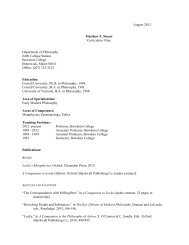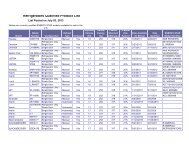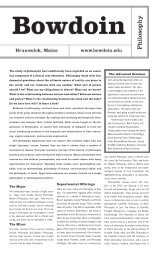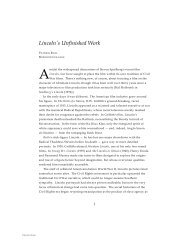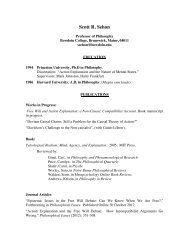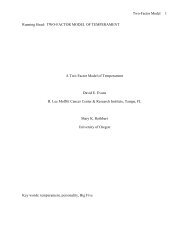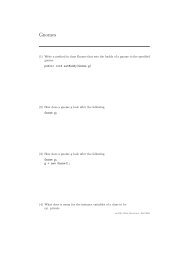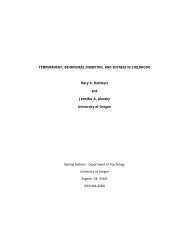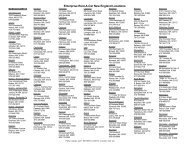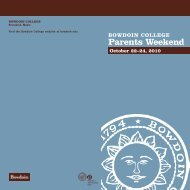You also want an ePaper? Increase the reach of your titles
YUMPU automatically turns print PDFs into web optimized ePapers that Google loves.
INTRODUCTION<br />
--Quantitative Analysis with Compound Standards<br />
The primary purpose of this discussion is concerned with how to use standard(s) in quantitative<br />
analysis using the ZAF or eDX software. Even when standardless quantitative analysis is<br />
routinely performed, it is always a good idea to obtain a standard of a similar composition and<br />
see how close the standardless analysis is to the reported data. If it is desired or necessary to<br />
improve the accuracy of the analysis, then standards can be used to accomplish this.<br />
The examples discussed below utilize a sample set of 6 mineral spectra (a garnet standard; the<br />
spectra are labeled garnet01.spc to garnet06.spc). The garnet01.spc has been implemented<br />
as the standard to analyze the remaining 5 spectra which have been collected from different<br />
spots on the same standard. Quantitative results are summarized for analyses using the<br />
“Compound Standard” mode, and with the use of SEC factors (Standardless Element<br />
Coefficients).<br />
THE COMPOUND STANDARD<br />
The spectra to be analyzed will typically have been collected from a single session in sequence<br />
using the same element list, with the same accelerating voltage, and with the same beam<br />
current/spot size setting. It is possible to compensate for variations in beam current if a current<br />
meter and Faraday cup are available, but this is primarily of value if the user can not be certain<br />
that the analyzed elements should have a sum which equals 100% (or very near 100%). In this<br />
case, an assumption for the garnet standard of 100% for the reported elements (O, Al, Si, Ca,<br />
Mn and Fe) is certainly valid.<br />
Procedure. In the ZAF or eDX software, open the standard file spectrum (garnet01.spc; click<br />
on “File”, “Open” and specify the file name from the correct directory). The first step will be to<br />
provide the information necessary that will allow us to use this spectrum as a standard.<br />
Although, the sample is an oxide, oxygen will be measured directly as an element; and this<br />
sample was saved with oxygen in the element list and oxides were not checked as the sample<br />
type.<br />
In the space below, mouse clicks will be shown with brackets with the text enclosed within to<br />
designate the button or feature where the mouse is clicked. For example, “[OK]” indicates that<br />
the mouse is clicked on the “OK” button.<br />
-the “Quantify” control panel should be made active.<br />
-[Stds]<br />
-[Options]<br />
-[Compound]<br />
-[Setup]<br />
-Type the percentage for each element followed by an<br />
“enter” (38.78, 10.92, 17.08, 0.24, 15.35, and 17.64 for<br />
the O, Al, Si, Ca, Mn, and Fe, respectively)<br />
-[RZAF] (calculated pure element intensities will be<br />
displayed)<br />
<strong>EDAX</strong> Training Course - Analysis with Compound Standards - page 1




